Reducing the Cost of Flying
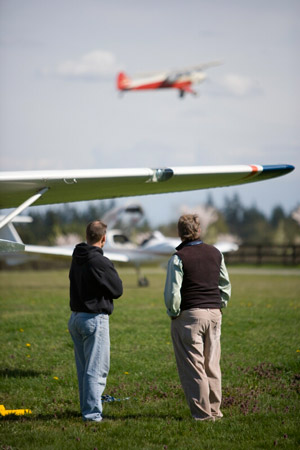
- Overview
- Technical Information
- Tips for Both Renters and Owners
- Renter's Tips
- Aircraft Scheduling
- Block Time
- Taking a Friend
- Logging PIC Time
- The Civil Air Patrol
- Wet or Dry?
- Fuel Finder Service
- AOPA Airport Directory
- Flying Clubs
- Delivery Flights
- Choosing the Right FBO
- Commercial Pilot Options
- Tow Gliders
- Drop Jumpers
- Tow Banners
- Flying the "Best" Airplane
- Renter's Insurance
- AOPA Renters Insurance
- Owner's Tips
- Leasebacks
- Co-Ownership
- Leasing Report
- Hangaring the Aircraft
- Repitch the Propeller
- Wing Covers
- Engine Blankets
- Fueling at Home Base
- Changing the Oil
- Purchasing Oil
- Purchasing New Equipment
- Build your Own Gust Locks
- Aircraft Repairs
- Airframe Modifications
- Use a College Maintenance Shop
- Be Gentle With the Aircraft
- The Coast Guard Auxiliary
- Consider a Home Equity Loan
- Purchase Direct From the Owner
- Buying With a Partner
- Co-Ownership
- Flying Clubs
- Carry Adequate Insurance
- Sell Privately
- Form a Cooperative Fuel Farm
- Leasebacks
- Additional Resources
- From the AOPA Archives
Importance to Members
This subject report is intended to help pilots save money flying. Money-saving suggestions, such as buying block time for renters or using a fuel finder service, will be discussed, along with ideas for starting or joining a flying club, or purchasing an aircraft with a partner. Whether you rent or own your aircraft, you will find tips to consider for stretching your dollar.
Please call AOPA’s Pilot Information Center with questions – 800-USA-AOPA (872-2672) Monday through Friday, 8:30 to 6:00 ET.
Overview
This subject report is laid out in such a way that both renters and owners can find specific money-saving tips. They range from something as simple as taking a friend, to something as complex as flying pressure-patterns. Are you thinking of purchasing an aircraft? You’ll find a discussion of the benefits and drawbacks of owning vs. renting.
The Decision: To Rent or to Buy?
For some pilots, renting is a more cost-effective option than buying. For others, owning an aircraft makes more financial sense. Deciding whether to continue renting or to buy an aircraft of your own involves considering a lot of factors. Here are some of them:
- How often do you fly? If you fly once or twice a month for pleasure only, ownership will probably not make good financial sense.
- How often would you like to fly? If you believe that the availability of an aircraft seven days per week, 24 hours a day might change how much flying you do, a purchase should at least be considered, but a word of caution is necessary: Many pilots fool themselves into thinking that owning an airplane will increase the number of hours they fly. In many cases, it doesn't.
- What kind of budget can you allocate to flying? Are you flying only when you have enough cash left over at the end of each month, or do you have a set amount regularly committed to flying?
- Is the flying business-related, personal, or some of each? If you had the availability of an aircraft, would you fly more on business and take more vacations than you do now?
- How many people do you normally carry? Can you carry a few of the comrades along on a business trip to share expenses? Would you take more family trips if you had room for all the family members?
- How fussy are you about appearance and working order of components? If you don't like renting an aircraft that has an "inop" sticker pasted on the panel or one that looks as if it hasn't been washed in months, a purchase might be worth the cost.
- Are you willing to make some personal sacrifices to fly? Can you get along with an older car if that helps you afford an airplane?
- What does the ego want to fly? Will you be happy owning a Cessna 172 when you really want a Cessna 310? Now is the time to be honest with oneself. Is the thrill of a high-performance aircraft, or in the case of a Cessna 310, an extra engine, really worth the extra expense?
- How do you feel about sharing? Would a partnership work for you? Do you like sharing, or would this defeat the purpose in buying in the first place?
- What is the availability of rental aircraft at the local airport? If you can find a variety of aircraft locally that offer good availability as well, it might make more sense to rent.
Read more in this article.
Technical Information
Money-saving Tips for Both Renters and Owners
Forage for Pilot Supplies
Decide which flight related items you really need, and separate them from the ones you can live without.
- The clipboard — OK, you need a pilot clipboard, but instead of buying one from the pilot shop, why not head to the local discount store and purchase a regular clipboard, some Velcro, and a strap to fasten it around the knee? The difference in price will probably be about $25.
- Sunglasses — You need sunglasses – what pilot doesn't? Instead of the $300 variety, why not head back to the discount store and see if you can't find some that look good and do the job for much less money.
- Flight bag — Instead of spending $250 on a nice leather “Pilots Bag”, just go to a discount leather store and spend about $75 for a decent leather bag.
- IFR goggles — Purchase a pair of the plastic industrial safety glasses — the type with regular eyeglass frames and side protector panels. Then use a little masking tape to cover the bottom inside portions of the lenses to provide proper view limiting, then sand the rest of the lenses to create the fog-like look. The cost will be about $3.
- Buy an inexpensive stepstool — If you head to the aircraft parts supply store, an official aircraft stepstool that folds into the baggage compartment can easily cost you $50. You can purchase a small stepladder in a hardware store for about $20.
If you travel a great deal on business, a general aviation aircraft might help you enjoy the travel experience much more. Some business travel costs are tax deductible; how much you can deduct depends on several factors, so check with an accountant. AOPA's publication, A Pilot's Guide to Taxes: Income, Personal Property, Sales and Use, includes a great deal of information on this topic.
Many jobs today still offer fringe benefits, with some being more lucrative than others. None is better than a job that offers a discount on flying. Many FBOs offer employees a discount on flight time and/or maintenance. A number of people keep part-time jobs working at an FBO's flight desk, line crew office, or even in the charter department, to qualify for this benefit.
In Chicago, a Cessna 172 currently rents for rates approaching $130 per hour wet, while at an airport about an hour's drive away, the rate can drop to as little as $90 per hour. Ownership costs drop as well, including those of tiedown or hangar fees, maintenance, and fuel.
A commercially produced checklist can cost $15 to $20 or more and often leaves out some of the items you would like to include. With a computer and some lamination stock, you can make your own for about $2.
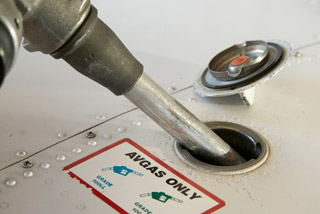 Fly at a Low Power Setting to Save Fuel
Fly at a Low Power Setting to Save Fuel
This is one of the best methods to cut the cost of flying if you own an aircraft or rent an aircraft dry. Pulling back the throttle a bit costs a little extra in time but pays off in fuel savings.
In ground school, we all learned that wind varies with altitude and circulates clockwise around a high-pressure area and counterclockwise around a low-pressure area.
It's easy to take advantage of winds when planning a cross-country flight by selecting an altitude with the best tailwind (or least headwind), balanced against the time required for climb and descent. Picking a suitable altitude can shorten enroute time by as much as 10 percent on an average general aviation flight, saving precious fuel dollars.
Charles Lindbergh used pressure-pattern flying to save fuel and later taught U.S. military aviators the secrets. Pressure-pattern flying means nothing more than making a trip holding a single carefully calculated heading, allowing prevailing winds to push the aircraft into a ground track that provides a very close approximation of minimum time enroute.
The formula for using pressure-pattern flying first figures the amount of drift (in nautical miles) caused by the prevailing high or low-pressure areas, then applies that nautical-mile figure to a simple E6B calculation.
To take advantage of pressure-pattern flying, use the formula:
Drift (in nautical miles) = (P2 - P1) K/TAS
In this formula, P2 is the actual barometric pressure in inches of mercury at cruise altitude above the destination airport, and P1 is the actual barometric pressure at that same time above the departure airport. The true airspeed is expressed in knots for a result in nautical miles.
"K" is a factor dependent on the average latitude of the trip, as shown in the following table:
| LATITUDE RANGE | K FACTOR |
|
20-25 |
540 |
|
25-28 |
480 |
|
28-31 |
440 |
|
31-34 |
400 |
|
34-38 |
360 |
|
38-43 |
330 |
|
43-50 |
300 |
The formula will report the number of nautical miles of drift that would be caused by the wind if no correction angle was applied. An E6B or any aviation calculator can easily convert this figure into a drift correction angle. If P2 is larger than P1, it will be a left wind correction; if P2 is smaller than P1, it will be a right wind correction.
Plan Landing Direction to Minimize Taxi Time
Especially at larger airports with long runways, landing at the very beginning of the runway when the FBO is at the opposite end can mean several clicks on the Hobbs meter while taxiing. If the runway is 12,500 feet long, for instance, and you have to taxi for 11,000 of those feet at 5 mph, taxi time is nearly 25 minutes.
At busy controlled fields with numerous airline departures, asking for a runway that will not require three-minute holds for wake turbulence is an option that can save time.
An FBO can discuss the times during the week aircraft most often sit on the ground. It may be possible to negotiate a lower rental rate because the aircraft normally wouldn't have flown anyway. Generally, aircraft are busier on weekends and less busy Tuesday, Wednesday, and Thursday. Try beginning negotiations with a 10-percent reduction in price. The worst thing that can happen is the manager might say no or counter with five percent. Try to, also, schedule flights during off-peak traffic periods, therefore spending less time on the ground due to airport traffic congestion.
Buying block time is easy and can save significant cash. For instance, a newer glass-cockpit Cessna 182 rents for $175 per hour wet, but for a larger, one-time payment, the owner might agree to $165 per hour. A 10-hour block, can save $100. The downside to block time is advance payment. If the aircraft goes out of service, being without an aircraft that was prepaid can be frustrating. Additionally, make certain the person taking block-time money is stable, reliable, and trustworthy. AOPA has heard some horror stories from members who buy block time, then find the aircraft not to be as great a bargain as first thought and are refused refunds.
Boring holes in the sky alone can sometimes be just that, a bit boring. Why not take along a friend — pilot or not — to enjoy the flight? If the friend is a pilot, split the flight (and the cost) right down the middle, with each pilot possibly logging pilot-in-command time. As long as the pilot flying is rated for the aircraft, he or she may log PIC time as "sole manipulator of the controls" (FAR 61.51). The safety pilot may also log PIC flight time by acting as safety pilot, a required crew member, if the pilot flying is wearing a view-limiting device. Read more about safety logging pilot in command time in the Pilot Information Center Subject Report.
Join the Civil Air Patrol
The Civil Air patrol — an auxiliary of the U.S. Air Force — offers renters a great opportunity to fly at little or no cost. One of the primary missions of the CAP is search and rescue when an aircraft is lost. CAP members use either civilian or CAP-owned aircraft on their search missions. If missions are flown in privately owned aircraft, normally the government reimburses the pilot for fuel and oil. If the pilot has completed the proper check-outs before a mission and flies a CAP-owned aircraft, the pilot incurs no cost.
Airplanes are typically rented either "dry" (without fuel) or "wet" (including the fuel). Most FBOs rent aircraft wet, compensating for pilots who won't learn to use the mixture control. Significant benefits can be realized by understanding fuel leaning and locating a good dry rate. Use of an exhaust gas temperature (EGT) gauge can affect fuel management. Slowly lean the mixture until a slight increase in rpm occurs. Enrich the mixture just enough to keep the engine cool. The engine will run rough with continued leaning. The setting will need to be adjusted as the aircraft climbs or descends.
During cross-country operations, use a fuel-price reporting service. AOPA Online Airport Directory provides limited free online fuel price information.
A club normally offers lower rental rates than those of a typical FBO, because a club's overhead is significantly less and there is usually no profit motive.
There are some restrictions to a flying club. Clubs normally charge an entrance fee to purchase a portion of equity in the club assets, as well as monthly dues to offset regular costs of aircraft maintenance. Also consider aircraft access. How many club members are there per aircraft? A good rule of thumb is no more than 10 pilots per airplane. The secret to flying more for less in a club environment is to consider all the costs, (hourly, monthly, and access) before you join. Also ask how to leave the club in an unforeseen circumstance. Read up on the details of how to establish a flying club in Flying Club Resources.
Moving airplanes from one location to another can provide free flight hours. Locate aircraft sales organizations at local airports, and provide an availability schedule.
This tip seems like common sense, but it can really turn into a big money saver. Looking for the right FBO means shopping for value. Make some phone calls. Rates and equipment, particularly in large metropolitan areas, vary greatly.
A Commercial Pilot Certificate
One of the best ways to save money is to get paid for flying. A few of the more common methods of building time with a new commercial pilot certificate are listed below.
Tow Gliders
Seek out the glider ports nearby and ask if they need any help. There is not too much training involved in learning to pull a glider, but the variety of situations encountered, like a glider that will not release, can offer you some invaluable experience.
Carry Parachute Jumpers
Carrying jumpers can also be a great way to build time and earn money. The aircraft the jumpers leave come in all shapes and sizes. Like the glider-tow profession, training takes time, but it is not that difficult. It involves responsibility for considerably more people than in a glider-tow position.
Tow Banners
Banner towing is easy to learn and offers enough variety in flying weather — temperature extremes, winds, etc. — to keep it interesting. Check local airports for banner-towing companies, or try the yellow pages under "Aerial Advertising."
Flying for the least amount of cash does not always mean renting the cheapest aircraft. To keep costs in line, consider the following. Do you fly alone or with a family of four sometimes? Why pay for extra seats you don't need? Is time very critical (business meetings) or of different importance (touch-and-go practice)? Is the newest aircraft the most important to you, or is an older model at a lower price OK as well? Do you need state-of-the-art avionics, or do you even care? Essentially, choose the mission first, then the aircraft. To practice landings and takeoffs, fly an aircraft that rents for less. To make a business trip where weather and speed might be a concern, a higher performance, better-equipped aircraft at a higher rate might be necessary.
Renters Insurance: Do You Need It?
Based on the frequent questions expressed by many AOPA members about insurance when renting an aircraft, we have compiled these answers to important questions.
Q: Why should I buy a renter's insurance policy? My FBO tells me they have insurance.
A: Contrary to popular belief, most renters are NOT included in the FBO insurance policy. The FBO's policy does not protect the pilot; it only protects the FBO and the aircraft.
Q: I have been flying without renter's insurance for years, why do I need it now?
A: Recent shifts in insurance practices have put the financial risk of even minor mishaps on pilots. And with the spiraling costs of parts and labor, repairs can run into the thousands.
Q: Is renter's insurance expensive?
A: No, renter's insurance from AOPA Insurance Services is inexpensivefor liability coverage. Comprehensive coverage is also affordable, with options available so you can select the coverage that best suits the needs.
One solution to cost-of-flying issues is to lease the aircraft back to a local FBO or flying club. You still own the airplane; the lease merely allows others to use the aircraft. Benefits of a lease include income, and the extra flying helps protect the aircraft from rust. Then there are the tax aspects of a lease. Essentially the relationship you form with the operator of the aircraft puts you into the own small business, an entity the IRS expects to make a profit. Talk to an accountant before you sign any lease agreements, just to be certain you understand what you're getting into. AOPA's publication, The Pilot's Guide to Multiple Ownership: Co-ownership provides a great deal of information on this subject.
Storing the aircraft in a hangar lowers the cost of flying substantially. Protecting the aircraft from dirt and insects saves money on maintenance. The chance of damage to the aircraft from wind or storms is minimized. Aircraft insurance companies might offer a lower rate. Keeping the aircraft in a hangar in northern climates will make preparing the aircraft for flight significantly easier in the winter. Because most hangar rentals include the utilities, this is an opportunity to use an engine heater at no extra cost. Enjoy an easier start, and avoid the gruesome engine wear caused by very little oil getting to vital moving parts. Protecting the aircraft from sun, wind, and other elements will preserve the finish. Finally, the chances of a thief stealing radios or other valuables from the aircraft are reduced when it is locked securely in a hangar. Look into a condominium style hangar - once the mortgage is paid off, the monthly operating costs will drop significantly.
Did you know the tips of the propeller flex during normal operation? Consider having aircraft with a fixed-pitch propeller repitched every three years. This adjustment costs as little as $75 and brings you a more efficient thrust conversion tool. This normally creates an increase in airspeed and reduction in aircraft noise. This adjustment is in addition to a dynamic propeller balancing.
In northern climates during the winter, keep a set of wing, elevator, and windshield covers stowed in the baggage compartment of the aircraft. When parking on an aircraft ramp, pull the covers on. Then, even if the aircraft is outside all night during a snow or ice storm, no expensive deicing is necessary.
When its winter up north, shutting down a nice warm aircraft for just a few hours can require paying for a preheat before restarting the engine. Fastening engine blankets around the cowling and closing off the engine intakes after shutdown will keep the aircraft toasty for hours.
Many FBOs offer options for fueling the aircraft at a reduced rate at the home base, if you taxi the aircraft to the pumps. Some operators offer a fuel discount for self fueling with a major credit card, because it eliminates billing paperwork. During refueling, consider leaving enough room for expansion in the tank to avoid losing fuel out the vent as it becomes warmer and expands. Under some temperature extremes, fuel can expand as much as 10 percent.
Changing the oil is considered the cheapest insurance available. Normal engine operation produces acids that accrue in the oil; allowing these acids to remain in the engine for long periods gives them time to destroy those critical crankcase parts bit by bit. Changing the oil is one of the preventive maintenance operations private pilots can perform under FAR Part 43. Save the cost of labor by changing your own oil and filter.
Buying oil by the case, rather than by the quart, often saves about 15 percent of the cost. If you change the oil regularly — every 25 hours — you can easily go through a few cases each year.
Purchasing and Installing New Equipment in the Same Location
When the time comes to buy new avionics or equipment, it's tempting to purchase on price alone. It can actually cost money in the long run to purchase equipment at one location and trying to find another shop to install it. Finally, there is the service issue. Will the home FBO be able to repair this equipment once it's installed?
Commercially produced gust locks cost well over $100. You can make these with some pine boards, approximately 3/8-inch thick, cut to shape. Add a few plastic streamers to prevent forgetting them during the preflight Total cost, about $10.
There is simply no doubt that an aircraft should have all its components operating correctly, for safety as well as dispatch reliability. It is difficult (if not illegal) to fly the aircraft IFR when one of the radios is inoperative or if the pitot heat doesn't work. The question is whether or not you fly off somewhere to have that repair made or let the people on the field do it. The cost of the flight out and back to have a non-local maintenance shop do the work must be considered as well.
Most modifications claim to save you money once you install them. The only decision you must make is to determine how much money they'll save you in addition to the increases in speed or performance they offer.
Use a College Maintenance Shop
Pilots who live near a college that teaches an aviation maintenance course could have an edge in reducing costs. While restrictions apply, student mechanics can often provide reduced-cost, or even free, maintenance labor on the aircraft.
Like drivers who insist on squealing their car tires, some pilots abuse their airplanes. Here are a few tips that will save dollars in the long run.
- Make full-stall landings when weather permits. They allow you to use aerodynamic braking that saves wear and tear on brakes and tires. Become skilled at crosswind landings to reduce expensive tire wear dramatically.
- Fly at 65-percent power rather than 75 percent. The lower power setting is easier on the engine, uses less fuel, and does not cost that much in lost speed.
Join the Coast Guard Auxiliary
When flying a search-and-rescue mission for the Coast Guard Auxiliary, members are entitled to have all or a portion of flying costs reimbursed by the federal government. Situations vary by type of mission, but some squadrons own aircraft and allow qualified members to fly at no cost as well.
Buy the Airplane with a Home Equity Loan
The interest from the mortgage is still deductible — at least this year — as is the interest on most home equity loans. Make the government the partner in buying an airplane, so to speak. Borrow the necessary funds, and deduct the interest according to the appropriate tax bracket, but check with an accountant or tax advisor for complete details.
Purchase the Aircraft Directly From the Owner
Brokers add a fee (often as high as 10 percent) to the amount the owner wants to receive from the sale of his or her aircraft. Some privately sold aircraft are advertised in local newspapers and publications such as Trade-A-Plane. Checking the bulletin board at all airports within an hour or two flying time can yield information on a good variety of aircraft for sale.
Buy the Next Aircraft with a Partner
A co-ownership of one, two, or even three individuals who pool their resources to purchase an aircraft can be a great way to cut the cost of the flying. Co-ownership will allow you to cut the monthly costs in half, or possibly more. AOPA has a publication on this subject, The Pilot's Guide to Multiple Ownership: Co-Ownership and Flying Clubs .
Insure the Aircraft Adequately
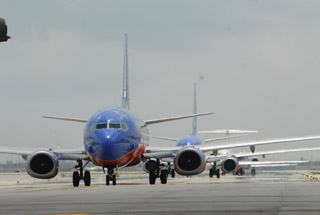 "Adequate" means don't over-insure or under-insure. You can save money by only insuring the aircraft for what it would cost to replace it. When it comes to liability coverage, consider the personal circumstances. If you're single, rent an apartment, and don’t have a family, you might not opt for much liability insurance.
"Adequate" means don't over-insure or under-insure. You can save money by only insuring the aircraft for what it would cost to replace it. When it comes to liability coverage, consider the personal circumstances. If you're single, rent an apartment, and don’t have a family, you might not opt for much liability insurance.
The AOPA Insurance Agency (AOPAIA) is committed to providing comprehensive and affordable insurance to pilots. As the largest light aircraft insurance agency, we partner with A-rated companies to provide the most coverage options and the best value.
Now that you know how much a broker can cost, realize how much money there is to be saved — often thousands, depending upon the broker — by selling the aircraft privately.
If you don't have fuel at the home base, or the cost is prohibitive, it's sometimes possible to form a "cooperative" with other local pilots and install a fuel farm.
Additional Resources
- Cut costs by eliminating redundant NDB approaches
- GA flight sims: A great way to sharpen skills and cut flying costs
From the AOPA Archives
- Frugal Flier: DIY Oil Change
AOPA Pilot, January 2009 - Frugal Flier: A Light Bulb Goes On
AOPA Pilot, February 2009 - Frugal Flier: Gotcha Covered
AOPA Pilot, March 2009 - Frugal Flier: Worn Out?
AOPA Pilot, April 2009 - Frugal Flier: Sticky Solution
AOPA Pilot, May 2009 - Frugal Flier: Give Me Space
AOPA Pilot, June 2009
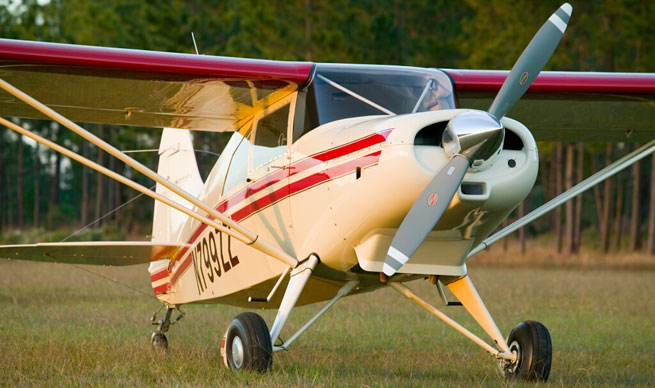
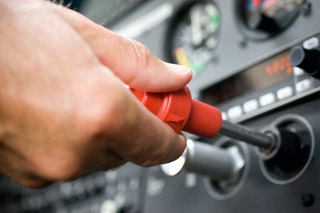 Make Delivery Flights
Make Delivery Flights 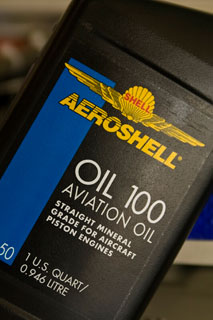 Changing the Oil
Changing the Oil